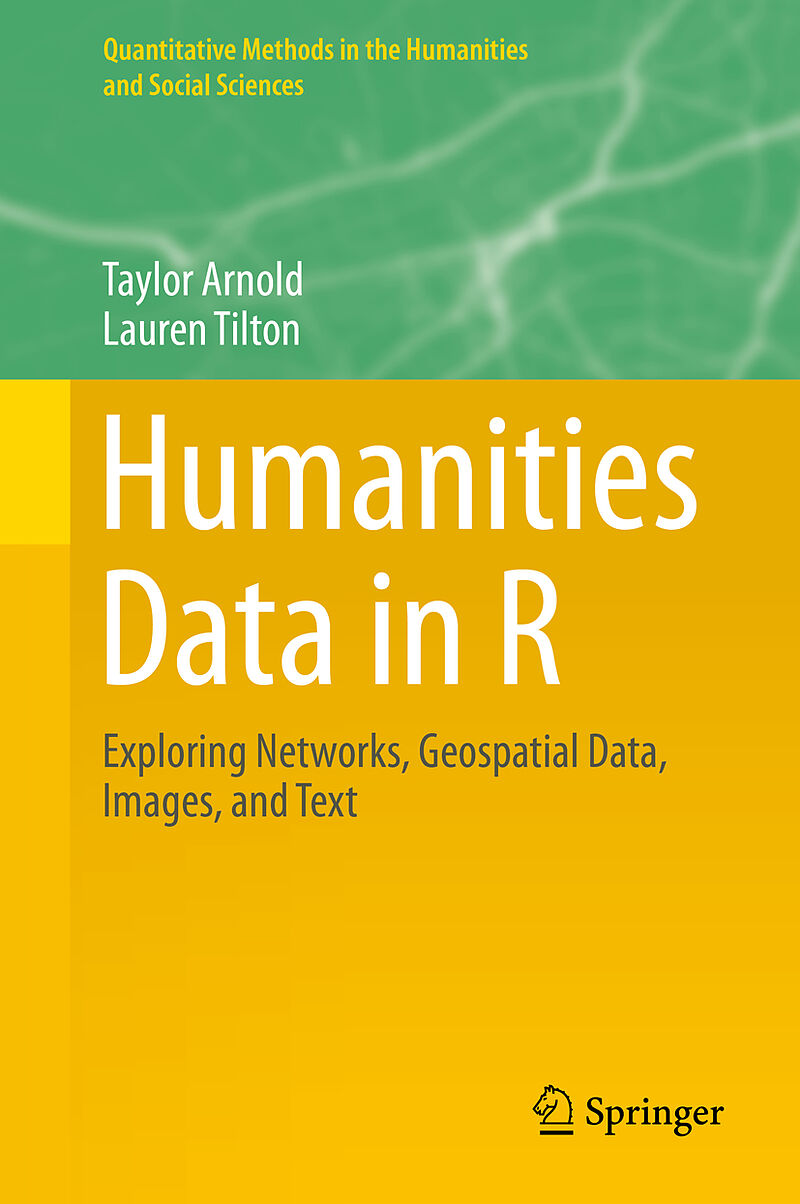Humanities Data in R
Einband:
Fester Einband
EAN:
9783319207018
Untertitel:
Exploring Networks, Geospatial Data, Images, and Text
Genre:
Mathematik
Autor:
Lauren Tilton, Taylor Arnold
Herausgeber:
Springer International Publishing
Auflage:
1st ed. 2015
Anzahl Seiten:
228
Erscheinungsdatum:
01.10.2015
ISBN:
3319207016
This pioneering book teaches readers to use R within four core analytical areas applicable to the Humanities: networks, text, geospatial data, and images. This book is also designed to be a bridge: between quantitative and qualitative methods, individual and collaborative work, and the humanities and social sciences. Humanities Data with R does not presuppose background programming experience. Early chapters take readers from R set-up to exploratory data analysis (continuous and categorical data, multivariate analysis, and advanced graphics with emphasis on aesthetics and facility). Following this, networks, geospatial data, image data, natural language processing and text analysis each have a dedicated chapter. Each chapter is grounded in examples to move readers beyond the intimidation of adding new tools to their research. Everything is hands-on: networks are explained using U.S. Supreme Court opinions, and low-level NLP methods are applied to short stories by Sir Arthur Conan Doyle. After working through these examples with the provided data, code and book website, readers are prepared to apply new methods to their own work. The open source R programming language, with its myriad packages and popularity within the sciences and social sciences, is particularly well-suited to working with humanities data. R packages are also highlighted in an appendix. This book uses an expanded conception of the forms data may take and the information it represents. The methodology will have wide application in classrooms and self-study for the humanities, but also for use in linguistics, anthropology, and political science. Outside the classroom, this intersection of humanities and computing is particularly relevant for research and new modes of dissemination across archives, museums and libraries.
Provides a user-friendly beginners guide to the key concepts in the digital humanities by focusing on four major types of humanities data structures: networks, text corpora, geospatial data, and images Assumes no prior programming experience Suitable for a one-semester course at the university level for undergraduate, graduate and professional students, or as half or full-day tutorial or seminar
Autorentext
Taylor Arnold is Senior Scientist at AT&T Labs Research and Lecturer of Statistics at Yale University. His research focuses on statistical computing, numerical linear algebra, and machine learning. He is the technical director of Photogrammar (photogrammar.yale.edu).Lauren Tilton is a doctoral candidate in American Studies at Yale University. Her interests include documentary media, 20th century history, and visual culture. She is an active member of the digital humanities community, serving as the humanities director of Photogrammar and co-Principal Investigator of the Participatory Media project.
Inhalt
Set-up.- A Short Introduction to R.- EDA I Continuous and Categorical Data.- EDA II Multivariate Analysis.- EDA III Advanced Graphics.- Networks.- Geospatial Data.- Image Data.- Natural Language Processing.- Text Analysis.- Appendix.

Leider konnten wir für diesen Artikel keine Preise ermitteln ...
billigbuch.ch sucht jetzt für Sie die besten Angebote ...
Die aktuellen Verkaufspreise von 6 Onlineshops werden in Realtime abgefragt.
Sie können das gewünschte Produkt anschliessend direkt beim Anbieter Ihrer Wahl bestellen.
Loading...
Die aktuellen Verkaufspreise von 6 Onlineshops werden in Realtime abgefragt.
Sie können das gewünschte Produkt anschliessend direkt beim Anbieter Ihrer Wahl bestellen.
| # | Onlineshop | Preis CHF | Versand CHF | Total CHF | ||
|---|---|---|---|---|---|---|
| 1 | Seller | 0.00 | 0.00 | 0.00 |
